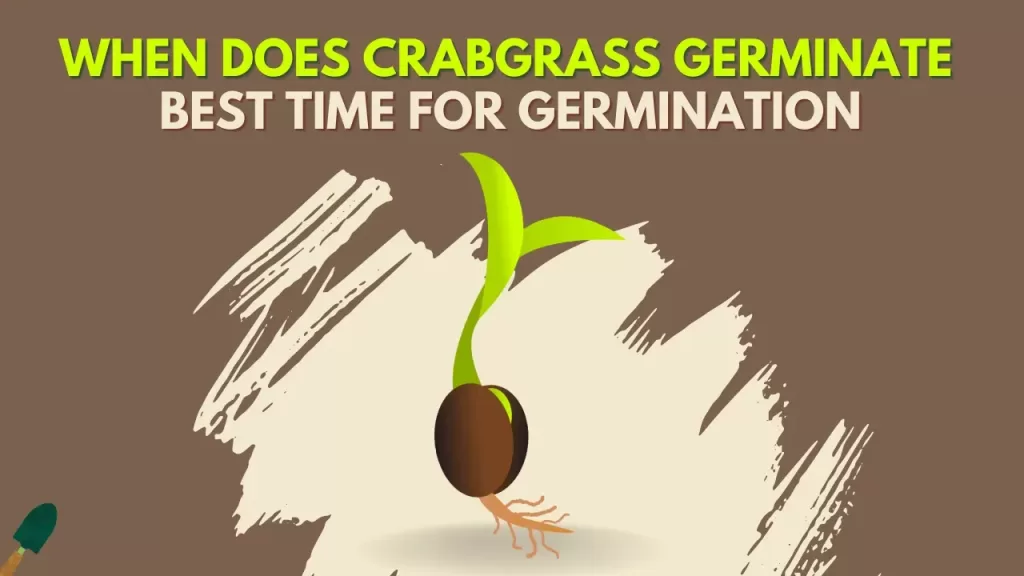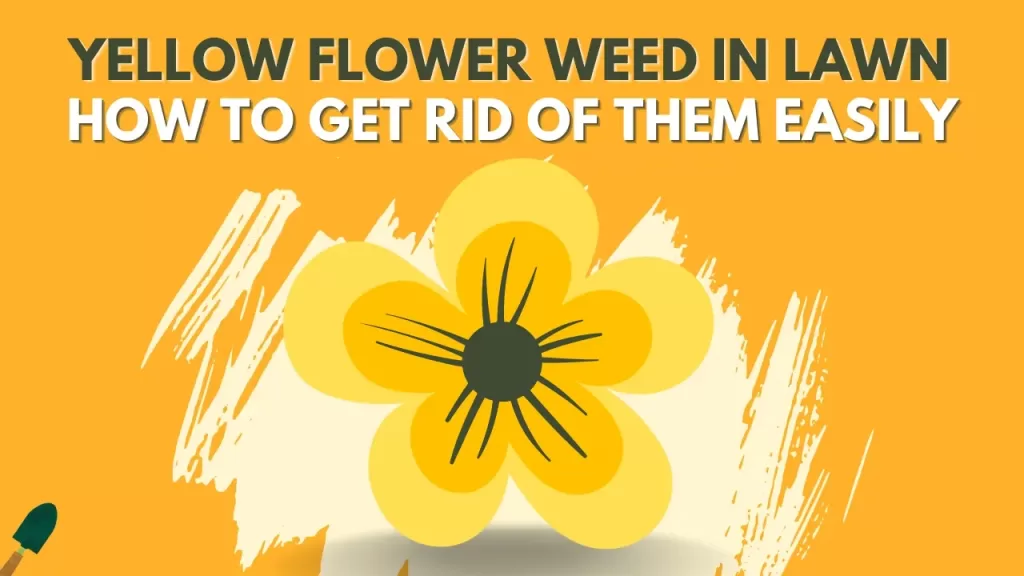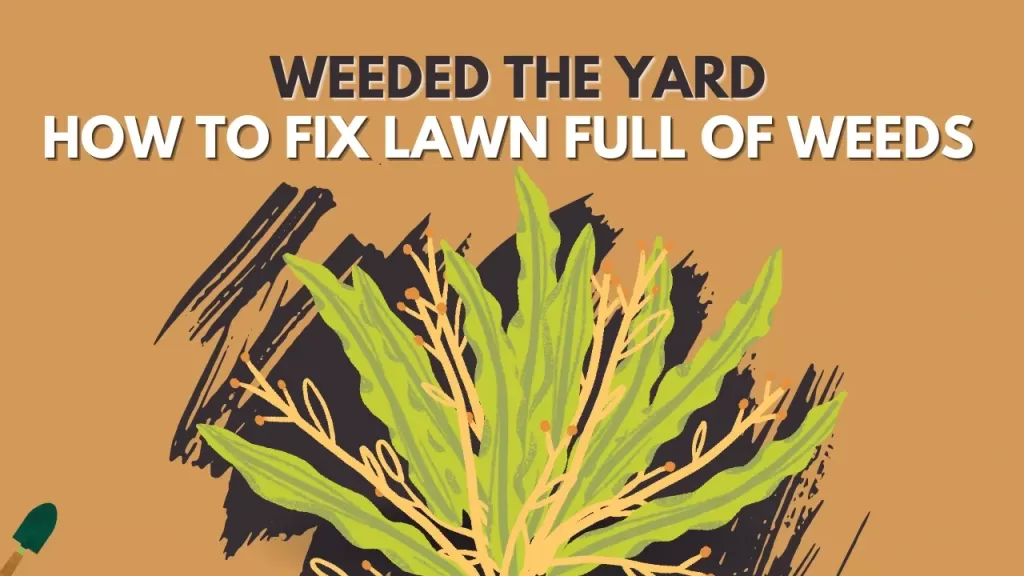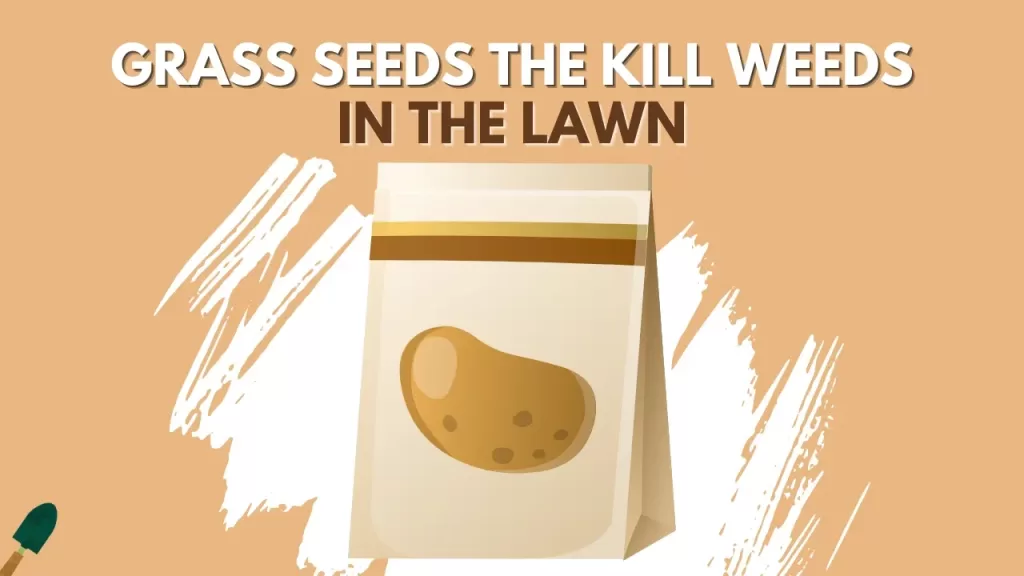Isn’t it very hard to remove weeds manually after they invade your field? How about if you already know the conditions for not letting weeds like Crabgrass harass your field? It is cool when you don’t let them have the conditions they require to have a placement on your lawn.
So when does crabgrass germinate and at what temperature:
Crabgrass starts to germinate from early spring to late summer when the soil temperature gets between 55 to 70 degrees Fahrenheit. The soil temperature needs to be in the ideal condition for 4-5 days in a row for the seeds to germinate. And peak germination happens when the soil temperature gets around 65 degrees.
Seeing unwanted plants in the lawn instead of thick green grass is a really bad experience for a lawn owner. And seeing those ugly crab-looking plants on the lawn is the worst as they are very difficult to eliminate. So instead of eliminating them, let’s stop them from coming into the lawn.
But the question is How? Well, we can provide you with all the knowledge you need for crabgrass.
What is Crabgrass?
Crabgrass is an annual weed that can be commonly found on every lawn. It is a very hardy weed that can be very difficult to get rid of from your lawn. Crabgrass has a very coarse texture and a different colour from the grass making it stick out on the lawn and the lawn looks uneven and ugly.
The summer is when you will see this weed grow and thrive on your lawn. It usually pops up anywhere it can find a place.
Crabgrass spreads itself with the help of seeds and these seeds can be very hard to kill before it starts germination in the soil. So removing the grass before it produces seeds is very crucial as it can be very difficult afterwards.
Crabgrass doesn’t require a healthy lawn to grow in it. This weed can also grow where the grass can’t and requires fewer nutrients and water than grass.
Before we dive into it, let us answer some basic ideas and notions about Crabgrass.
In which Season Crabgrass grows?
Early spring to late summer (also when they get ideal soil conditions). Read ahead to question 2 to further know.
What is the optimum temperature for Crabgrass to thrive?
Between 55 – 70 F° (12 – 22 C°)
The peak growth occurs at 65 F°(18 C°)
After how many days can you observe the growth of Crabgrass?
The soil temperature needs to be in the ideal condition for 4-5 days in a row for the seeds to germinate.
Now you know when the crabgrass starts to germinate but let’s look in detail at how you can protect your lawn from this invading weed.
What does crabgrass look like?
Crabgrass is a very difficult plant to identify in the lawn and differentiate from other grasses as well as other weeds. It has to be one of the most misidentified weeds.
Crabgrass is a very adaptive weed that grows according to the soil and nutrients available like the amount of moisture in the soil or light or hard sunlight, which makes it different from others. This quality also makes this weed come in different sizes, colors, and textures.
Crabgrass grows from seeds that in the beginning look like corn stalks and after some time the leaves come out from it. When the plant is grown and mature well, the leaves grow thicker than the grass and attach to a stem that resembles the shape of a star.
As crabgrass is adaptive to the lawn, it can be small with small blades and grow up to around 6 inches or it can be taller around 48 inches. It can shoot out and take over your lawn, it has long branches that shoot out and turn in sharp angles, which look like crab legs. These crab-leg-looking branches are where the weeds got their name.
These crab legs also make the weed grow low and stay underneath mower blades depending on the height of the cut. The stalk grows taller which carries the flowers of the plant which produces seeds to grow next year.
Summary :
Looks like a corn stalk in the beginning and star shape with thick leaves consecutively as it grows. It can be about 6-48 inches tall.
When does crabgrass germinate?
Crabgrass produces seed in summer and early fall, which then drops into the soil. The seeds remain in the soil over the winter months to germinate next season.
Crabgrass seeds don’t depend on the season to germinate. The ideal for crabgrass to grow comes in summer that’s why you see crabgrass growing and thriving in summer.
But don’t be confused between thriving and germination, as germination of the seeds occurs way before and in the summer months what you are seeing is a mature plant that will be very hard to remove from the lawn.
Summary :
Most probably in summer and early fall. But it can also pave its way in ideal temperature conditions.
At what temperature does crabgrass germinate?
Crabgrass germinates when the average temperature of the soil reaches between 55 degrees to 70 degrees Fahrenheit. The germination doesn’t occur immediately but the temperature stays this way for 4-5 days.
You will see crabgrass growing in pathways or concrete slabs first as concrete can retain heat and promotes germination faster than the soil.
Summary :
It will germinate between 55-70 F°
How to prevent crabgrass?
If you want to make your lawn look beautiful and keep the lawn clean from unwanted weeds like crabgrass, then you can do certain things to make sure that your lawn can fight with these weeds and keep them away.
Here are the checkpoints needed:
- Check pH
- Fertilize
- Keeping grass high
- Maintaining a healthy lawn
Let’s see them all in brief.
Check pH – to keep away the crabgrass from the lawn, you need to see the soil is not acidic for the grass to grow. To make sure that the soil is not acidic, test your soil for the pH level. A normal pH level of the lawn soil is between 5.5 to 7.
If the pH level is above or below normal then you need to put garden lime in the lawn to normalize the soil pH. As grass can’t grow on the acidic lawn, crabgrass can thrive on it. So keep the pH in control.
Fertilize – crabgrass thrives on poor soil, where the grass can’t grow as crabgrass doesn’t need many nutrients to grow. So to keep the grass thick and crabgrass away from your lawn, fertilize your lawn to make sure the grass is getting proper nutrients from the soil and don’t have any place for the crabgrass to grow.
Keep the grass high – crabgrass grows very low to the ground but needs proper sunlight to grow and thrive on the lawn. So to keep it away from the lawn, keep the grass higher than usual to keep getting sunlight to the ground or to the crabgrass, which will prevent the crabgrass from growing or germinating in your lawn.
Keep the lawn healthy – overall to keep the crabgrass away from the lawn is to make sure that the lawn is healthy and the grass is thick. There should be no bare patches on the lawn where the crabgrass can grow.
Reseed these patches and do a proper watering of the lawn. Keep in mind that proper mowing, watering, and fertilization are the key to a healthy and perfect lawn.
How to prevent crabgrass from germinating?
Crabgrass is a very hardy plant and it can take out the whole lawn destroying all the other plants very easily. Removing the mature crabgrass plant is also very difficult and tiresome and can grow back very easily.
To prevent crabgrass, the best way is to prevent the germination of the seeds. There are 3 main ways to keep crabgrass from germinating in the lawn:
- Apply pre-emergent
- Mow higher
- Overseed
Time for seeing them in brief:
Apply Pre-emergent – applying pre-emergent to the lawn is the best way to prevent the crabgrass seeds from germinating in the soil as it blocks the seeds from germinating into the soil and makes it easier for us to protect our lawn from the invading weed. But for most lawn owners applying pre-emergent at the beginning of the season is enough to prevent germination.
But that’s not the right way as the germination depends on the soil temperature and you need to perfect the timing of the application so that the seeds have no way to germinate.
There should be two applications of the pre-emergent to the lawn to stop the germination as the seeds first start to germinate when the temperature reaches 55 degrees and it occurs until the soil is higher than 75 degrees. So you need to first apply the chemical before the soil gets around 50 degrees and another application at around 70 degrees.
Mow Higher – crabgrass seeds germinate in the soil when the soil temperature goes above 55 degrees Fahrenheit and until it stays below 80 degrees. If you keep the grass higher than usual then the sunlight won’t reach the soil and the soil temperature will stay below 55 degrees which will make sure that the seeds don’t germinate in the soil.
Overseed – crabgrass seeds won’t germinate in the soil if they don’t have the place to grow. To eliminate any bare patches and make the grass thick, overseed your lawn before the summer heat kicks in or before the temperature reaches 50 degrees to stop crabgrass seed germination.
Also if you have any bare patches in the lawn, then there is a chance that crabgrass can germinate in these bare patches. Top dress the bare patches properly to make sure grass goes easily in these patches and the grass doesn’t die again in these patches.
How to kill crabgrass on the lawn?
Removing crabgrass from your lawn is the hardest thing for a lawn owner as it is a very hardy plant and can be very difficult to remove and can grow back very easily from the help of roots left behind in the soil. But there are some ways, if done properly, that can eliminate crabgrass from the lawn.
- Manually remove
- Spot treatment
- Start over
Manually remove – if you are seeing a little bit of crabgrass in your lawn, the best way is to remove the plant manually from the lawn. But be careful to remove the whole plant from the lawn as a little bit of plant left behind can grow back and invade the lawn very easily and fast.
The best way is to dig around the plant a little bit and pull out the whole plant with the roots as the plant can grow back from the roots.
After removing the plant, apply herbicide to the lawn to make sure that no plant is growing back from a small bit left behind.
Spot Treatment – if you are seeing a lot of crabgrass in your lawn then the best and easiest way to remove it is with the chemical herbicide. Apply the herbicide directly to the plant 2 times with a one-day gap in between. This will burn the plant completely and then you can rake and remove the plant from the lawn.
After removing the dead plants, apply a batch of pre-emergent herbicide to the lawn to make sure any new germination doesn’t happen in the lawn from the fallen seeds.
Start over – If you have tried both the methods from the above but can’t control crabgrass to back in your lawn then the best way is to start over. For this, you need to burn all the plants in your lawn and prepare the soil and make it healthy and resistant to the crabgrass and then reseed it with suitable grass for your region.
This is the only way if you are not seeing any result from the above two methods.
So we hope you got all your answers related to Crabgrass. Now you have to sit back and say goodbye to Crabgrass. Still, I have answered some more commonly asked questions below.
Does crabgrass germinate in the fall?
Yes, crabgrass seeds can germinate in the fall due to the falling temperature of the summer in between 50 to 70 degrees which is an ideal temperature for the crabgrass to germinate. But you don’t have to worry about germination at this time as crabgrass doesn’t thrive in cooler temperatures and the frost after the fall will kill the small crabgrass plant germinated in the fall.
What month do you put down crabgrass preventer?
You can apply a crabgrass preventer from late March to early April as it is the time when the soil temperature goes between 55 to 70 degrees which is ideal for the germination of the crabgrass seed. Applying the preventer at this time of the month will block the seeds from germination.
Can you apply crabgrass preventer too early?
You can apply a crabgrass preventer early in your lawn to make sure no germination of the seeds happens but it needs to be around 3-4 days early and not weeks early as if the preventer applied too early can be ineffective to the seeds when the peak germination takes place. Check for the soil temperature and make sure you are not applying the preventer too early.





